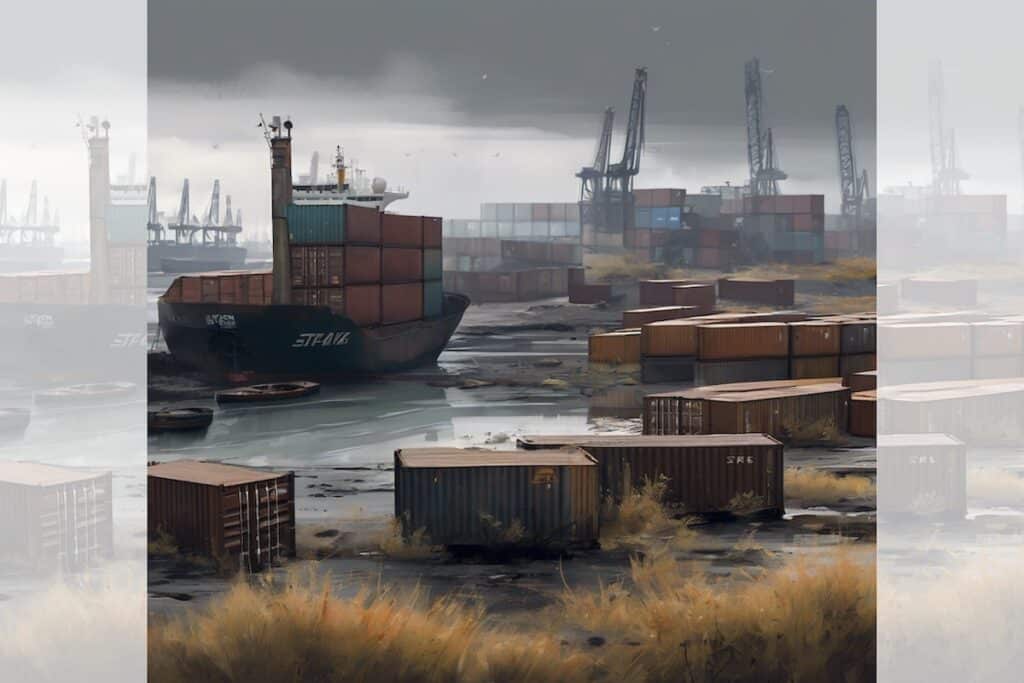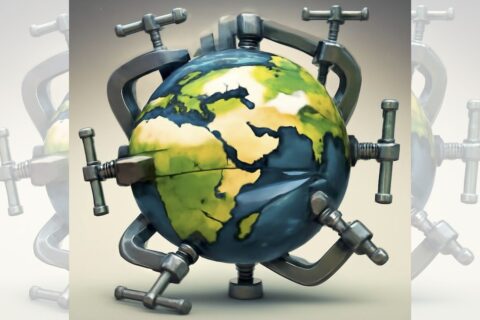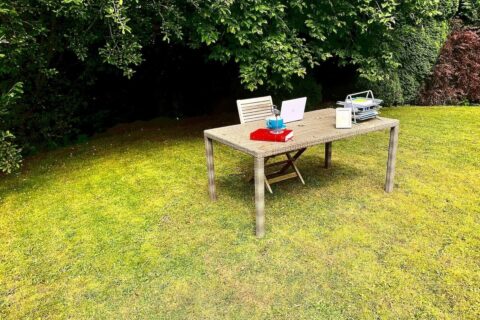
New Writing: With news of tariffs and trade wars breaking by the hour on Truth Social, SustMeme Editor Jim McClelland asks: Will de-globalisation be good or bad for construction, and can sustainability help?
Only six months ago, globalisation was still seen as desirable.
Business boasted of supply chains that spanned the Planet, transporting good and services continent-to-continent. Digital innovation was shrinking time and space, while the real world raced to keep pace.
Back then, almost nobody talked about tariffs, except for one man: Donald Trump.
The script is very different now: isolationism stands loud and proud, centre-stage; the chorus consists of on-shoring, re-shoring and near-shoring; the drama unfolds daily.
So, where does this rewrite leave a global player like construction? What is its role?
Caught in the crosshairs
Well, in the case of UK trade, it is important to place construction in context.
Data just out tells the tale: official UK import and export figures for construction building materials in 2024 paint a pretty stable picture for the year, after a more volatile 2023.
Exports of construction materials came in at just over £8.5bn, down marginally (-0.4%) year-on-year. Imports for the same period totalled almost £23bn (+1.0%). This means the UK trade deficit in construction materials widened by £259M (+1.8%) to roughly £14.5bn.
Drilling down into the details reveals that the top five exported materials in 2024 accounted for 35.8% of the total. Listed in order of magnitude these were: electrical wires; paints and varnishes; lamps and fittings; builders’ ironmongery; and air conditioning equipment.
The top five export markets made up more than half the total (53.5%) and were almost exclusively located in the EU, with one notable exception. In order of magnitude, the list reads: Ireland (18.3%); United States (12.2%); Germany; the Netherlands; and France.
As for imports, the top five construction materials in 2024 accounted for 29.4% of the total, with the category breakdown looking markedly similar: electrical wires; lamps and fittings; sawn wood (over 6mm thick); air conditioning equipment; and builders’ ironmongery.
Again, the top five import markets (45.1% of the total) were all in the EU, except for the biggest name on the list: China (18.2%); Germany; the Netherlands; Italy; and Spain.
Overall, therefore, construction is caught squarely in the crosshairs of the tariff wars, with China as its biggest trade partner for imports, and the US its second-largest export market.
So, what does this mean for the UK in the short term? And how can sustainability help?
Collateral damage
Well, it is not going to be easy. If trade wars persist or worsen, almost no economy, sector or business will realistically escape completely unharmed. We are all collateral damage.
Furthermore, with the public purse as good as empty, there is little likelihood of any uplift in spending.
In short, construction cannot expect to be bailed out by central government; resilience planning is a must.
Local, clean and green
Whilst national politicians wheel and deal to secure agreements and exemptions, supply chain managers will be busy trying to manage and minimise risk. There is no panacea, but there can still be a plan.
Meantime, in a de-globalising scenario, adopting a ‘local approach for local people’ will assume even greater priority — and not just because the business world is getting smaller.
The local economic multiplier effect means pounds make pounds, and jobs beget jobs.
This multiplier effect is even greater when the spend is clean and green. Recent analysis from the Energy and Climate Intelligence Unit (ECIU) estimates each full-time net zero job generates value 38% above the UK average, with every £1 creating an additional £1.89 in the wider economy.
This is the business case for sustainability.
For once, if you can’t go big, it really is best to go home: go local, clean and green.
Small is beautiful
Furthermore, small is beautiful, especially when it comes to footprints and bills.
In the built environment, there are significant operational efficiencies yet to be realised around emissions and energy consumption, not least in the likes of commercial real estate.
The latest United Nations Environment Programme (UNEP) report is adamant that most of the solutions we need already exist — scaling them is the real challenge.
Admittedly, certain efficiencies may depend on precisely the kinds of digital tech targeted by tariffs — nevertheless, there are still quick wins to be had in terms of savings.
Sustainability and strategy
Tactically, these partial fixes and marginal offsets all add up, incrementally. None of them alone will be sufficient to cushion the immediate, exponential impact of a global trade war.
In fact, even combined they will probably fall some way short of compensating fully for lost revenue growth, profit reductions and the opportunity-cost of enforced market exits.
So, de-globalisation will be bad for business, at first. However, to learn how things can be different over time — and maybe even good, strategically, for sustainability — check out the full-length article, free on The Hub:
Construction: Is de-globalisation good or bad?
To view a back-catalogue of articles authored by Jim McClelland for ‘The Hub’, please see archive here.
SUSTMEME: Get the Susty Story Straight!






